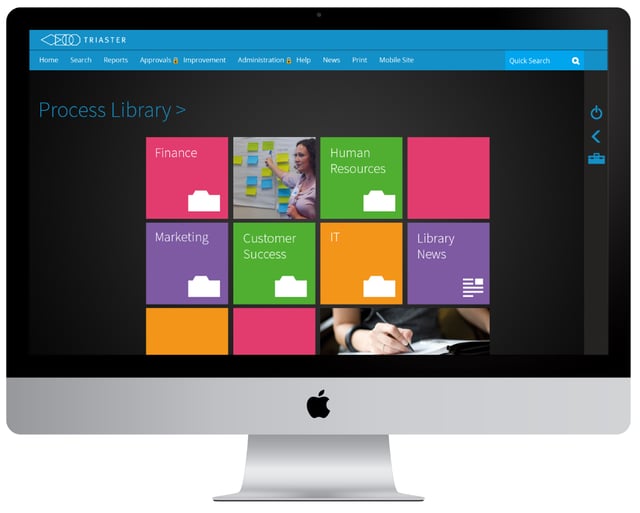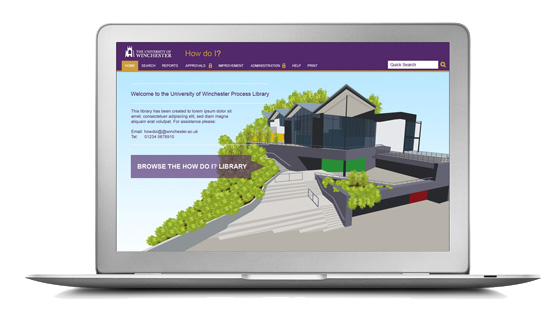So, you want to improve your business processes but you're in need of a process improvement project plan. Having a plan is very important for understanding the tools you need, the steps to take and the changes to make. Luckily, we have laid all of these out for you to follow.
For your benefit, I have included a process improvement analysis from many customer surveys and industry best practices in order to provide you with the best way to build your own successful process improvement project.
What is BPM Most Often Used For?
Recently, we conducted a survey where we asked customers to tell us the number one reason they purchased a Business Process management Software:
- 45% of customers purchased a BPM software in order to create a single process library that standardised processes across the company.
- 30% purchased BPM so they could easily capture their business processes or because they needed a tool that could identify those processes in the first place.
- 15% purchased the product in order to achieve organisation-wide buy-in from staff into the management system.
- 10% wanted a tool for creating process maps and sharing them with others in the company.
In order to build your own successful improvement project, you'll ideally want a management system that can do all of those things listed above.
For more on the current trends in BPM, go here: Current Trends In Business Management | SMB User Report 2017
Laying the Foundation of Your Process Improvement Project Plan:

Stakeholder Involvement and Support:
Getting organisation-wide buy-in and input is the most important part of this whole process. Without this, any future improvement project will be incomplete and any process mapping ineffective.
When Lockheed Martin decided to move from a paper-based business management approach to a more structured Business Management System, they needed to get the rest of the team on-board and as it was a big cultural change for the company, they needed a process library that would be easy to use and modern. They also needed a campaign that communicated the benefits of change to come later that would outweigh any change pains now.
To read more on the practicalities of securing stakeholder support, take a look at our video blog where we describe exactly what actions are needed to secure buy-in from employees and communicate the system changes.
Implement an Internal Management System:
This needs to be capable of mapping, modelling and sharing processes throughout your entire organisation to create a standardised foundation for any future improvement projects.

5 Steps You Should Build any Improvement Project Plan Around:
1. Map your processes
Once you have a system that is capable of capturing, sharing, using and improving your processes (a dedicated Business Process Management System for instance), you will need to map your processes.
You can create a process mapping team, assign one person to run process mapping workshops or conduct one-on-one interviews. May I suggest that you look at our extensive process mapping blogs above and our videos before you attempt this method - as getting it wrong could cost you considerable time, resources and block employee engagement on future projects.
2. Understand Your AS-IS:
An AS-IS process is a visual representation of a business process in its current state. AS-IS processes must be mapped and the current state of the business understood before changes and improvements can be made.
Use a process mapping tool to capture your AS-IS processes so that you can identify:
3. Bottlenecks and Opportunities:
A bottleneck is one process in a chain of processes that if limited in any way, will cause further limitations to subsequent processes in the chain. Bottlenecks can be either short-term or long-term and are most often seen in supply chain and manufacturing industries.
A short-term bottleneck is temporary and will usually not cause any significant problems. An example would be a skilled employee taking a few days off. Long-term bottlenecks occur more frequently and can slow down production or the execution of other processes further down the chain. An example of a long-term bottleneck would be a machine that is not working efficiently and is therefore causing long production queues.
However, it is not only bottlenecks that you should look for, but also opportunities to make processes more efficient - although you should always start with:
4. Big Issues and Work Your Way Down
If one of your children is ill, you're not going to take another one for a check-up first are you? In life, priorities are everything and your priority for any improvement initiative will be to diagnose the key problem points first and move on from there.
Once you've put out the fires, then you can start dealing with other improvement opportunities and if these are handled correctly, it will eventually lead to operational excellence.
5. Model the Potential Options For Improvement
This one is about analysing the risk of any potential change. If you are able to model any potential improvement, you can analyse the risk of a potential change before you implement the change. This way, you minimise the risk involved with any improvement project - To understand process modelling in more detail, visit our process modelling blog.
It is at this time I must reiterate, when undertaking these 5 change steps, you'll need a Business Management System that is capable of capturing, sharing, using and improving your processes.
University of Winchester's Process Improvement Project Plan Example:

The University of Winchester's Process Improvement Team approach the task of process improvement as follows:
- Always beginning with a clear objective
- The current process (AS-IS) is captured using the Triaster process mapping tool
- The mapped process is published to their Process Library where it is reviewed and approved
- Bottlenecks are highlighted
- Options for alternative processes are identified and analysed and the future (To-Be) process is modelled - this may incorporate, for example, the use of new technology or perhaps just a few small changes
- An action plan for implementation is formulated
- The project team presents the proposed process to management and colleagues
- The new process is agreed and implemented
- Short follow-up events are typically held at 15, 30, 60, 90 days and at one year to embed the new process as business as usual and review the return on investment.
For more on the University of Winchester's process improvement project that led them to picking up two British Quality Foundation Excellence Awards and 7 other case studies of successful improvement, download our e-book:
Related Articles:
How to stop wasting money in your business: 10 actions to take
The Top 10 Benefits of Process Mapping
Establishing a Business Improvement Team: 4 Must Do Actions
Written by Brad Fagan
Brad joined Triaster in 2016 as our Content Marketing Executive hailing all the way from Middle Earth (the film version, not the book) – New Zealand. Brad’s video skills soon resulted in new weekly Triaster videos and his individual touch in some of the Connector and blog articles. In June 2018 Brad moved to Germany with his wife Lynn.
